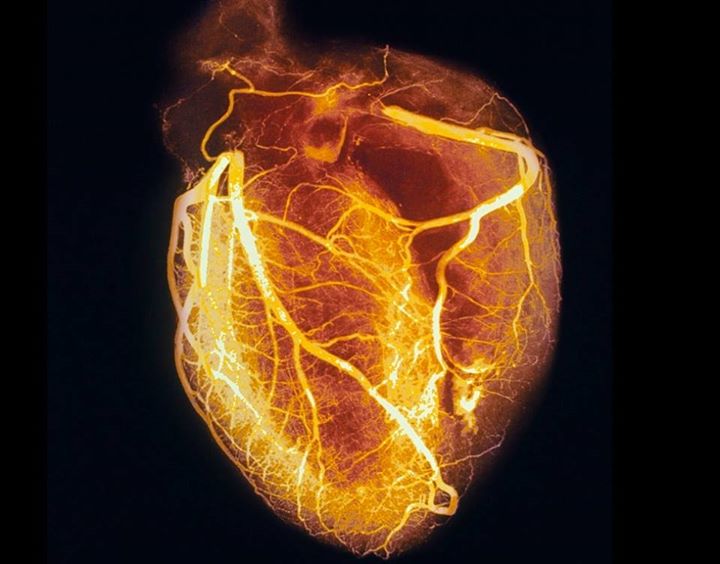 Scientists at UCLA have identified a molecule that appears to play a key role in the development of heart failure. The scientists found that blocking the molecule, known as chaer, in animal studies prevented the animals from developing heart failure.
Scientists at UCLA have identified a molecule that appears to play a key role in the development of heart failure. The scientists found that blocking the molecule, known as chaer, in animal studies prevented the animals from developing heart failure.
Although the research is still at an early stage, future drugs that target chaer or related signaling pathways may hold promise for treating or preventing heart failure, a condition that afflicts about 5.7 million people and is a contributing cause to roughly one in nine deaths in the United States. The results of the study were published in the journal Nature Medicine.
Chaer is not a protein; it is made of RNA, DNA’s simpler cousin, and belongs to a category of RNA molecules called long non-coding RNA, or lncRNA. It’s called “non-coding” because the molecules don’t encode and get translated into proteins, as do other RNAs. Non-coding RNAs have been considered part of the “dark matter” of biology because they are abundant and diverse in cells, and the DNA that encodes them accounts for most of plant and animal genomes, yet their roles have been largely unexplored.
“The observation that a single IncRNA molecule can activate a broad set of heart-failure related genes was a big surprise,” said Yibin Wang, the study’s senior author and a professor in the departments of anesthesiology, physiology and medicine at the David Geffen School of Medicine at UCLA. “The findings provide us a better understanding of the molecular processes of heart failure, which we hope eventually to target with effective therapies.”
With heart failure, the muscle tissue progressively thickens and stiffens, impairing the heart’s ability to pump blood.
Damage to the heart that occurs from coronary heart disease, heart attacks, chronic high blood pressure or diabetes can increase one’s risk of heart failure. Current therapies can slow the disease in its early stages but often become less effective as the disease progresses.
Scientists know that the normal, healthy pattern of gene activity goes awry in cardiac cells during heart failure. But the details of how high blood pressure and other heart stresses lead to this broad change in gene expression have been elusive.
In recent years, researchers have begun to investigate the possible roles of non-coding RNAs in this process. For their study, Wang and colleagues focused on chaer, which they had found in an earlier study to be present at unusually high levels in mouse heart cells at the outset of heart failure induced by high blood pressure.
When the researchers eliminated chaer in mice that were similarly induced by high blood pressure, they observed that the animals were essentially protected from heart failure, having little of the usual heart overgrowth (hypertrophy), scar-like remodeling of tissue (fibrosis), and loss of cardiac function.
The knockout of chaer also blocked the usual heart failure-related pattern of gene activity in the mice’s heart muscle cells. Experiments in human heart cell-based models of heart failure yielded similar results.
The researchers determined that chaer levels spike in heart cells after a jump in blood pressure, and trigger a cascade of heart failure events by binding to a large protein complex called PRC2. Normally, PRC2 works as an “epigenetic” regulator, switching off various genes across the genome. In heart cells, these PRC2-suppressed genes include those responsible for driving cardiac hypertrophy and other aspects of heart failure. Chaer interferes with this function of PRC2, essentially taking the brakes off heart failure-driving genes.
“For heart failure to develop, it has to get past this epigenetic ‘checkpoint,'” Wang said. “That’s an entirely new idea in the field, and we think it presents opportunities for developing future therapies.”
In principle, a drug that blocks or reduces chaer production in the heart, and thereby restores PRC2’s healthy function, could prevent or delay the development of heart failure in people who have high blood pressure or are otherwise at risk of the condition.
To that end, Wang and colleagues hope to find molecules that could be turned into chaer-blocking drugs. They also have begun to explore other signaling pathways that need to be present for chaer to produce its heart failure-inducing activity, and are already testing compounds that inhibit those signals.
Source: Zihua Wang et al. The long noncoding RNA Chaer defines an epigenetic checkpoint in cardiac hypertrophy, Nature Medicine (2016). DOI: 10.1038/nm.4179











